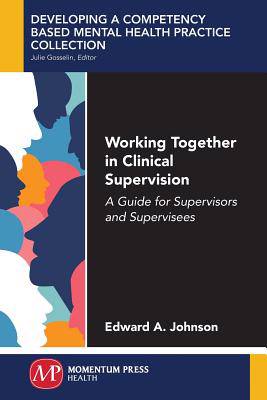
- Afhalen na 1 uur in een winkel met voorraad
- Gratis thuislevering in België vanaf € 30
- Ruim aanbod met 7 miljoen producten
- Afhalen na 1 uur in een winkel met voorraad
- Gratis thuislevering in België vanaf € 30
- Ruim aanbod met 7 miljoen producten
Zoeken
€ 65,95
+ 131 punten
Omschrijving
This brief, practical guide to clinical supervision uniquely addresses supervisor and supervisee together. The purpose of the book is to help the supervisory dyad collaborate effectively to meet the goals of supervision: to ensure client welfare, educate and evaluate the supervisee, and help the supervisee cope with the emotional challenges of doing psychotherapy. To do so, the book provides guidance on how to implement evidence-based and best-practice recommendations at each stage of supervision: preparation, beginning, middle, conclusion of active supervision, and the post supervision relationship. The emphasis throughout is on developing and maintaining a positive, collaborative supervisory relationship. Establishing this requires that the members of the dyad understand and agree on their respective roles and responsibilities, trust each other to carry them out, and feel safe enough to discuss the process. This book facilitates this by describing these complementary roles and responsibilities, and by providing activities that help the dyad establish mutual understanding, set goals, and complete necessary tasks. The book also illustrates better and worse ways these roles can be fulfilled from the author's experience. Other value-added features include sections devoted to: common problems in supervision and how to prevent or manage them, the competencies that supervisors and supervisees require to be prepared for their roles, how to incorporate diversity into supervision, and how to complete supervision contracts and evaluations. Written in an inviting, often conversational, tone the book is an invaluable aid to supervisors and supervisees of all levels of experience.
Specificaties
Betrokkenen
- Auteur(s):
- Uitgeverij:
Inhoud
- Aantal bladzijden:
- 156
- Taal:
- Engels
- Reeks:
Eigenschappen
- Productcode (EAN):
- 9781945612480
- Verschijningsdatum:
- 12/07/2017
- Uitvoering:
- Paperback
- Formaat:
- Trade paperback (VS)
- Afmetingen:
- 152 mm x 229 mm
- Gewicht:
- 217 g

Alleen bij Standaard Boekhandel
+ 131 punten op je klantenkaart van Standaard Boekhandel
Beoordelingen
We publiceren alleen reviews die voldoen aan de voorwaarden voor reviews. Bekijk onze voorwaarden voor reviews.











